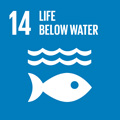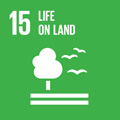- Docente: Maria Vallisneri
- Credits: 6
- SSD: BIO/05
- Language: Italian
- Moduli: Maria Vallisneri (Modulo 1) Nevio Agostini (Modulo 2) Stefano Montanini (Modulo 3)
- Teaching Mode: Traditional lectures (Modulo 1) Traditional lectures (Modulo 2) Traditional lectures (Modulo 3)
- Campus: Bologna
- Corso: Second cycle degree programme (LM) in Sciences and Management of Nature (cod. 9257)
Learning outcomes
At the end of the course the student has the knowledge related to the models of space-time distribution of animal biodiversity and He is able to critically evaluate the causes and the historical and ecological processes that have determined them. He also acquires awareness of the problems related to the management and conservation of wildlife in relation to climate change and human impact.
Course contents
- Definition, fields of investigation, historical stages. Purpose of modern evolutionary Zoogeography.
- Methodological premises for the zoogeographic study: biological evolution in the space-time context, the concept of species in zoogeography, reproductive isolation, speciation.
- Eco-zoogeography. The role of zoogeography for biodiversity conservation: threats linked to "global change".
- Extinction. Types of extinction with respect to space and time. Main causes.
- Alien species: introduction modes, effects, emblematic examples.
- Distribution area of an animal species: ecological and evolutionary analysis. Limiting factors: abiotic and biotic factors.
- Dissemination. Dispersion, barriers. Concepts of endemism and pandemism.
- Spatial dynamics of fauna and vulnerability criteria in relation to "climate change": case studies.
- Zoogeography of the islands: a formidable natural laboratory.
- Phylogeny and phylogeography principles. Emblematic cases in the Aves class (Paleognathae: Ratiti) and in the Mammalia class (Metatheria-Marsupialia); (Eutheria: Carnivora Ursidae, Felidae, Artiodactyla: Camelidae).
- Zoogeographic classification: faunistic features of regional units.
- Biomes: faunistic characterizations.
- Application approaches to the study of zoogeography: case studies. Fishing areas in the world: a model of protection and management of sustainable fishing. Optimal production and over-exploitation: causes and effects. Zoogeography and biodiversity of fish stocks.
Readings/Bibliography
- Argano R., Boero F., Bologna M.A., Dallai R., Lanzavecchia G., Luporini P., Melone G., Sbordoni V., Scalera Liaci L. Zoologia:evoluzione e adattamento. Cap.2 in parte, 5 in parte, 6, 7, 8. Monduzzi Ed. (2007).
-Hichman, Keen, Eisenhour, Larson, l'Anson. Zoologia. Ed. Mc Graw Hill. 2020.
- Zunino M., Zullini A . Biogeografia. La dimensione spaziale dell' evoluzione. Casa Editrice Ambrosiana, Milano (2°ed., 2004 ).
- distributed teaching material.
Teaching methods
Frontal lessons with PowerPoint projection; scientific films; educational material (articles, websites, PP); seminars.
Assessment methods
.
Teaching tools
computer, video projector
Office hours
See the website of Maria Vallisneri
See the website of Nevio Agostini
See the website of Stefano Montanini
SDGs



This teaching activity contributes to the achievement of the Sustainable Development Goals of the UN 2030 Agenda.
